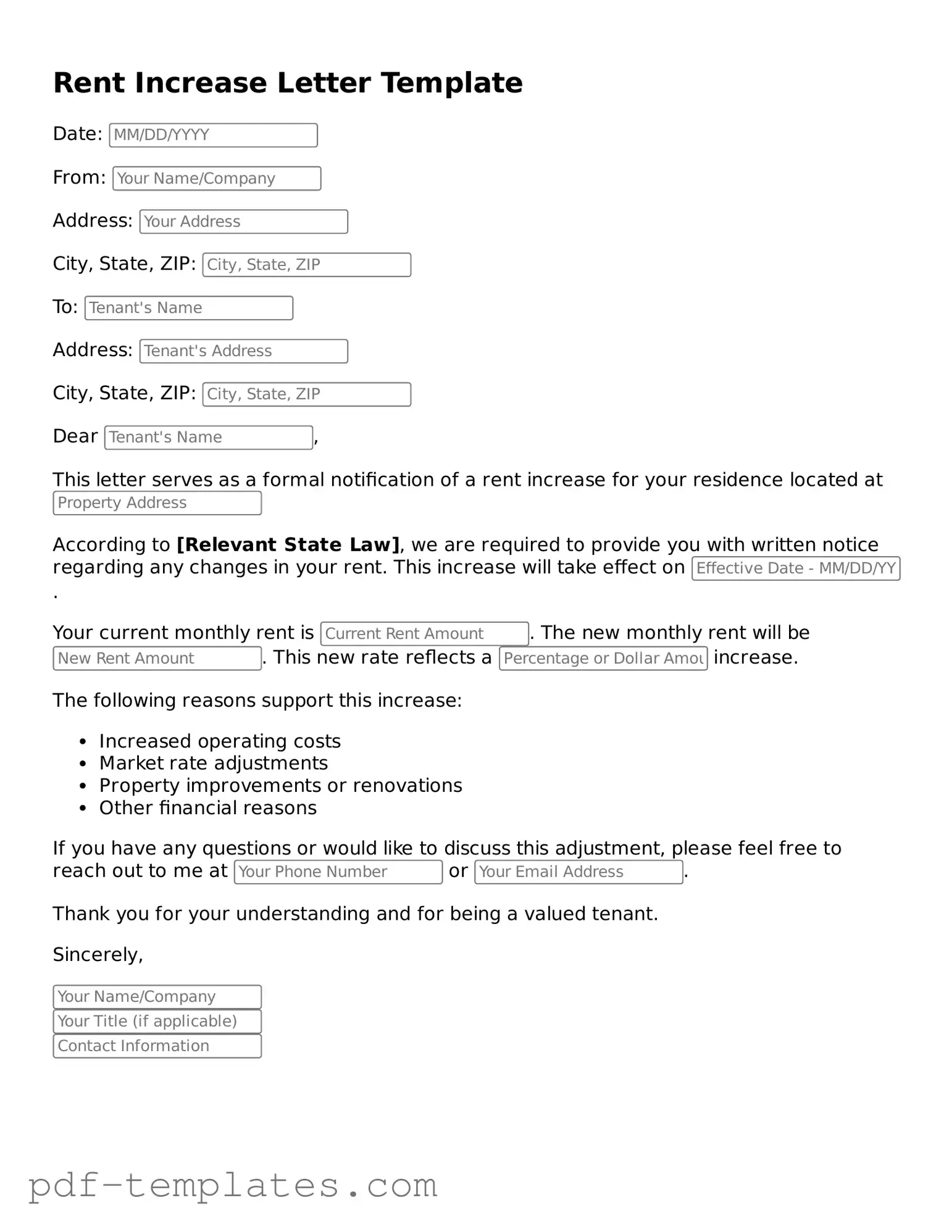The Rent Increase Letter is similar to a Lease Renewal Letter. Both documents serve to communicate changes in the terms of a rental agreement. While the Rent Increase Letter specifically addresses an increase in rent, the Lease Renewal Letter focuses on extending the lease term. Both documents should be delivered to tenants with adequate notice, allowing them to make informed decisions about their living arrangements.
Another related document is the Notice to Quit. This document is used when a landlord wishes to terminate a tenancy. Like the Rent Increase Letter, it must be delivered in accordance with local laws. However, while the Rent Increase Letter seeks to modify the terms of the lease, the Notice to Quit signals an end to the rental relationship altogether. Clarity and compliance with legal requirements are crucial in both instances.
The Eviction Notice shares similarities with the Rent Increase Letter in that both require careful attention to timing and legal stipulations. An Eviction Notice is issued when a tenant has violated lease terms, while the Rent Increase Letter is a proactive communication about changes in rent. Both documents need to be clear and professional to avoid misunderstandings and potential disputes.
A Rent Payment Reminder is another document that resembles the Rent Increase Letter. Both are used to communicate important information to tenants regarding their financial obligations. The Rent Payment Reminder serves to prompt tenants about upcoming payments, while the Rent Increase Letter informs them of an adjustment in their rent. Timely communication is essential in both cases to maintain a good landlord-tenant relationship.
The Lease Termination Letter is also comparable to the Rent Increase Letter. This document formally ends a lease agreement, while the Rent Increase Letter modifies the existing terms. Both require proper notice and adherence to state laws. Each document plays a critical role in the rental process, ensuring that both landlords and tenants are aware of their rights and responsibilities.
A Security Deposit Return Letter is similar in that it addresses financial matters related to a rental agreement. While the Rent Increase Letter informs tenants of a higher rent, the Security Deposit Return Letter communicates the return of a deposit after a tenant vacates. Both documents need to be clear, professional, and compliant with local regulations to prevent disputes.
The Move-Out Notice is another document that parallels the Rent Increase Letter. It informs the landlord of a tenant's intention to vacate the property. Both documents require timely delivery and adherence to lease terms. While the Rent Increase Letter adjusts financial terms, the Move-Out Notice indicates a change in the tenant's status, necessitating clear communication to avoid confusion.
The Maintenance Request Form can also be seen as similar to the Rent Increase Letter in that both facilitate communication between landlords and tenants. While the Rent Increase Letter addresses financial changes, the Maintenance Request Form seeks to address issues related to the property's condition. Both documents are essential for maintaining a healthy landlord-tenant relationship and ensuring that both parties' needs are met.
Understanding the various documents involved in rental agreements is crucial for both tenants and landlords, especially when considering the need for a comprehensive approach to managing rental transactions. For instance, utilizing resources like the lease agreement template available at https://txtemplate.com can significantly simplify the process by ensuring important terms are clearly outlined and adhered to.
Lastly, the Tenant Complaint Letter shares similarities with the Rent Increase Letter. Both documents serve as formal means of communication regarding issues within the rental agreement. While the Rent Increase Letter informs tenants of changes, the Tenant Complaint Letter allows tenants to express concerns or grievances. Clear and professional communication is vital in both cases to foster a positive living environment.
